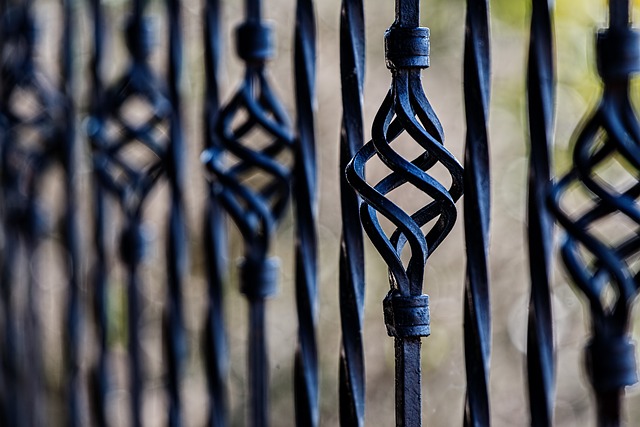Large properties present both challenges and opportunities when it comes to fencing. This article explores cost-effective solutions tailored to meet the unique needs of expansive landscapes, focusing on strategies that balance quality with affordability. From understanding the financial drivers behind fence construction to discovering low-maintenance materials and creative design options, this guide delves into various approaches that can significantly reduce costs without compromising aesthetics or security. Additionally, we examine DIY vs. professional installation, government incentives for sustainable fencing, and integration with landscaping for both functional and economic benefits.
- Understanding Cost Factors for Large Property Fences
- Longevity and Low-Maintenance Options to Save Money
- Creative Alternatives to Traditional Fencing Materials
- Landscaping Integration for Esthetic and Budget Benefits
- DIY Solutions vs. Hiring Professionals: A Financial Analysis
- Government Grants and Incentives for Sustainable Fencing
Understanding Cost Factors for Large Property Fences
When considering fencing solutions for large properties, understanding cost factors is key to making informed decisions. The size and scope of the project play a significant role in determining pricing, with materials and labor expenses scaling accordingly. Additionally, the type of fence chosen—whether it’s wood, vinyl, or chain-link—has varying cost implications, each offering different levels of durability, maintenance requirements, and aesthetics.
Other cost drivers include access to the site, terrain conditions, and any special requirements such as gates or custom designs. It’s essential to obtain quotes from multiple contractors to gauge market rates and secure the best value for your investment. Additionally, factoring in potential long-term savings through low-maintenance options or energy-efficient designs can make cost-effective fencing a wise decision for large properties.
Longevity and Low-Maintenance Options to Save Money
When considering fencing for large properties, opting for materials that offer both longevity and low maintenance is a cost-effective strategy. Durable options like vinyl or composite fencing require minimal upkeep, saving time and money in the long run. These materials are resistant to rot, rust, and fading, eliminating the need for frequent repairs or replacements. Unlike traditional wooden fences that demand regular painting, sealing, and treatment against pests, vinyl and composite options maintain their aesthetic appeal with minimal effort.
Additionally, these low-maintenance fencing solutions can withstand harsh weather conditions, from heavy rainfall to intense sunlight, ensuring they remain sturdy and vibrant for years. This longevity translates to a significant reduction in replacement costs, making it an economical choice for large properties where regular maintenance may be impractical or costly.
Creative Alternatives to Traditional Fencing Materials
In the realm of fencing, creativity can often lead to cost-effective solutions, especially for large properties. Traditional materials like wood and metal, while popular, can be expensive and require frequent maintenance. An innovative approach involves exploring alternative options such as vinyl or composite fencing, which offer durability at a lower cost. These modern materials mimic the look of wood but are resistant to rot, decay, and harsh weather conditions, eliminating the need for regular painting or sealing.
Additionally, living fences and hedges can serve as an eco-friendly and aesthetically pleasing alternative. Planting native species suitable for your region along the property line not only provides privacy but also supports local ecosystems. This natural approach can be more affordable than traditional fencing and offers a unique, ever-changing landscape design. Such creative alternatives not only save on material costs but also contribute to a more sustainable and visually appealing outdoor space.
Landscaping Integration for Esthetic and Budget Benefits
Integrating fencing into your landscaping can offer both aesthetic and budget benefits. By designing fences that complement the natural contours and features of your property, you create a seamless blend between your outdoor living spaces and the surrounding environment. This not only enhances the overall appeal of your large property but also reduces the cost of maintenance in the long run. Well-placed fences can act as natural boundaries, allowing for better organization of different areas within your vast landscape.
Furthermore, using materials that harmonize with your existing plants and architecture can make your fencing a subtle yet effective design element. This approach can save you from costly future replacements or repairs, as it minimizes the need for frequent upkeep. By combining functionality with visual appeal, landscaping-integrated fences offer a cost-effective solution that enhances both the value and beauty of your large property.
DIY Solutions vs. Hiring Professionals: A Financial Analysis
Installing a fence on a large property can be a significant financial investment. One key consideration is whether to take on the project as a DIY endeavor or to hire professionals. While doing it yourself (DIY) can seem appealing due to the potential cost savings, it’s essential to factor in the time and resources required. A thorough analysis should include not just material costs but also expenses related to tools, labor (even for self-labor), and any necessary permits.
Hiring professionals, while often more expensive upfront, offers several advantages. It includes guaranteed quality work, warranty coverage, and potential savings on long-term maintenance. Professional installers can also provide tailored solutions that DIY enthusiasts might struggle with, ensuring a fence that’s both functional and aesthetically pleasing. This financial comparison should consider the project’s scope, your skill level, and the value placed on time and peace of mind.
Government Grants and Incentives for Sustainable Fencing
Many governments are recognizing the environmental and aesthetic benefits of sustainable fencing, leading to initiatives that support homeowners and businesses in adopting eco-friendly practices. One significant aspect of this push is the availability of government grants and incentives for those who opt for sustainable fencing solutions. These programs aim to encourage the use of materials that reduce the carbon footprint and promote biodiversity.
Eligible options might include natural, locally sourced woods certified by sustainability organizations, recycled plastic or metal fences, and even living fences or hedgerows. Applicants typically need to meet certain criteria, such as adhering to specific environmental standards, using approved materials, and ensuring long-term ecological benefits. By taking advantage of these grants, property owners can not only enhance their landscapes with cost-effective fencing but also contribute positively to the local ecosystem.
